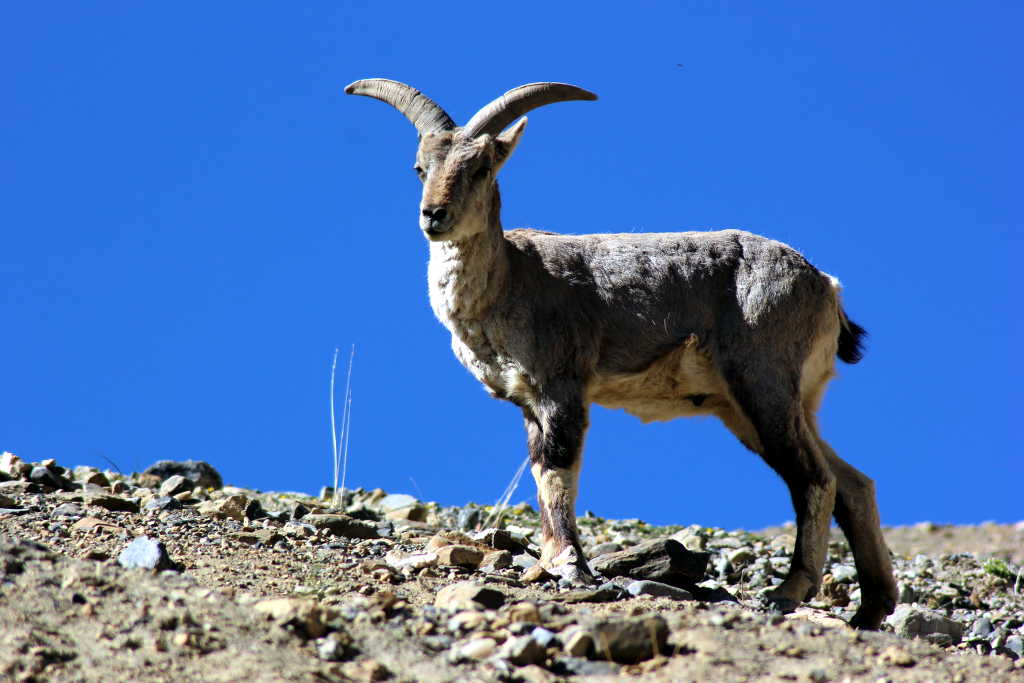
Pseudois nayaur (Bharal)
Common name
Greater Blue Sheep
Latin name
Pseudois nayaur Hodgson 1833
Local name
Bharal
IUCN/WPA/Indian status
Least concern/I/Locally common
Social unit
Solitary animals are common and herds mostly occur in medium sized group of 10-15, sexes usually segregate in summer when males mostly occur in all male groups and females and young separate into more secure areas
Size / weight
HBL : 120-140 CM, HAS : 80-91.4 cm. (male) HL: 38-76 cm.(male) 10-20 cm ( female ) Weight : 60-75 kg ( male) and 35-55 kg (female)
Description
Adult male Bharal have a slate blue coat. Ina winter, this colouration becomes more pronounced, while in summer the coat becomes red brown especially in females and young , serving as better camouflage. The trans Himalayas rams tend to achieve a light almost cream, colouration while in Himalayas the colour is much darker Adult rams in both areas have dark brown to black markings on the neck. The tail is short and dark. The males horn are very characteristic and curve outward, backward and then downward in a crescent formation. Females are one –third the size of the males , have much shorter and thinner horns that diverge out are dull shale in colour and have dark grey instead of black markings on their body.
Behavior
During rut , males rear up and strike each other like goats. However, they court females by raising their forelegs and stretching out their head in sheep like fashion, They may mouth their own red penis as a threat display but they may rub their face on the rival’s backside in appeasement.
Distribution
The Greater Himalayan meadows and trans Himalayan regions in India from Jammu & Kashmir to Arunachal Pradesh. Along with serow, has the largest distribution of a Himalayan mountain ungulate in India.
Habitat
Temperate and subalpine forests precipitous terrain with grass cover and slopes with oak and bamboo forests. In the Greater Himalayas, found on southern forested slops(1550-5300 m although they prefer higher altitudes between 2000-4400 m)
Best seen
Kibber WLS Himachal Pradesh Hemis NP Jammu & Kashmir, Gangotri NP Uttarakhand



